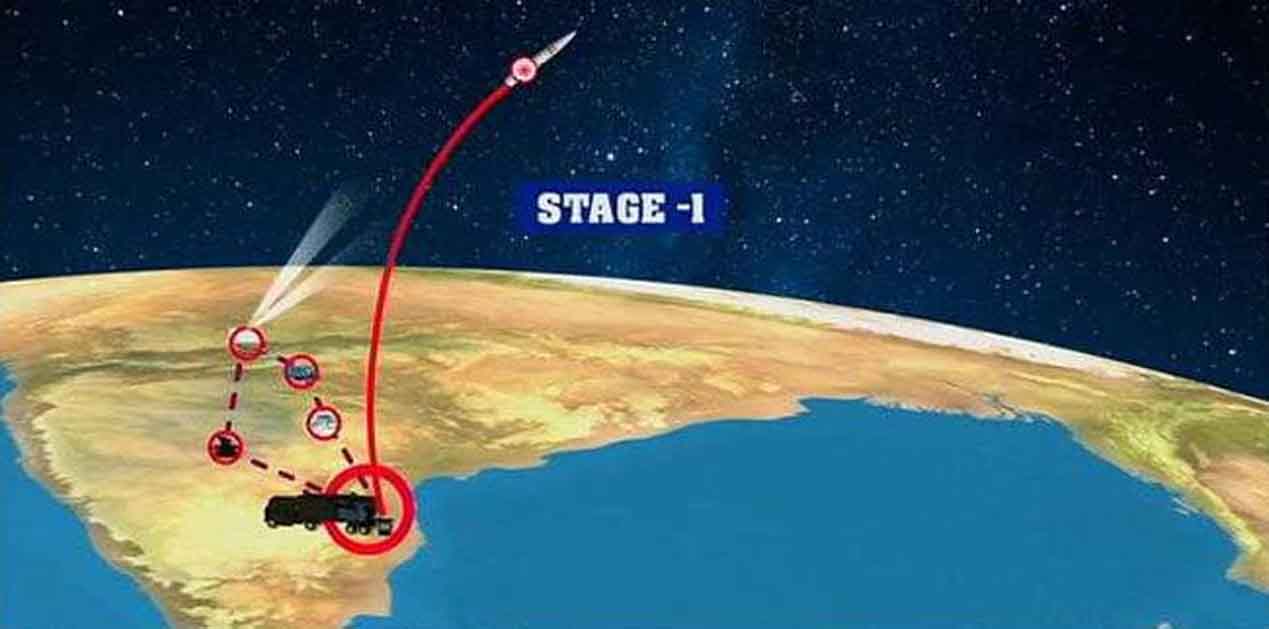27 March, 2019 will go down as the most memorable day of this decade when India demonstrated an indigenous and operational Anti-Satellite Technology (ASAT) System, the fourth nation to do so in the world after USA, Russia and China. The DRDO and ISRO must be complimented for making all Indians proud and closing a strategic deficiency in the security architecture of India. “Mission Shakti” has delivered and was declared successful by the Prime Minister to a rather anxious nation who were eagerly awaiting an announcement of national importance.
The trigger for taking on this complex high technology project to develop indigenous ASAT capability came from the Chinese ASAT (Also called “Counter Space”) test in 2007, wherein an ageing weather satellite of China was destroyed by a Direct Ascent ASAT weapon at an altitude of 875 kilometers. The event drew world wide criticism due to more than one thousand debris caused by the explosion. Incidentally, China had failed twice in her earlier attempts in 2005 and 2006.
India set up a Space Security Coordination Group (SSCG) in 2010 under the chairmanship of the National Security Advisor. SSCG had representation from the DRDO, IAF and NTRO. Their main task was stated to “guide India’s response to the Chinese threats”. However, China continued with the development of this critical capability and today is said to have full spectrum ASAT capability by way of kinetic energy, directed energy, electronic warfare and cyber weapons to address all vulnerabilities - ground systems, launch, orbital and telemetry/ tele-command, navigation and positioning. China has also developed a robot arm, ostensibly to arrest debris but capable of hijacking a satellite or disorient it. Commissioning of a space station next year would be a force multiplier for China’s security as also provide a firm base to launch missions for mineral assets in outer space and possible colonisation.
Our Indian military space programme is nascent. But both ISRO and DRDO are doing well. India has demonstrated her capabilities which are recognized world wide. Thanks to post 1998 sanctions, we have been able to develop a vibrant and high technology eco-system. Consequently, we have some of the following unique landmarks besides being highly economical:-
- First time success in demonstrating ASAT capabilities up to 1000 kilometers, at displayed 274 kilometers.
- Multiple launch capabilities with micro, nano, medium and heavy payloads from different nations.
- World record in launching 102 satellites in one mission.
- Carried out maneuver across two different orbits with plans to do that over three orbits very soon.
- First time successful MARS Mission.
- Deep space communications and high speed data links.
- All weather surveillance capability.
- Indigenous Navigation System (Indian Regional Navigation Satellite System (IRNSS), with an operational name of NAVIC (NAV-igation with Indian Constellation), and GAGAN.
- Credited with sensors which found water on moon.
- Multiple tele-command and telemetry stations, including ship based ones.
- Technologies for hardening the satellites from natural and manmade threats.
Let us have a quick look at the ASAT test and why is it unique:-
- Firstly, it does not violate any space treaty or laws. Briefing by the Ministry Of External Affairs was an excellent idea to contain any possible negative reaction.
- Secondly, the security of information like we did for the 1998 blast, though 300 persons were working on the Project. Further, the target satellite Microsat was registered as an Earth Observation Satellite launched in January 24, 2019.
- Thirdly, display of technology exploitation, hitting a target going at twenty times the speed of sound some 274 kilometers away in a very tight span of three minutes in which to get the data related to the target, analyse, and give command decision. Detect, Prepare and Intercept when in sight.
- The visibility of the target over Indian mass is also very short - eight to ten minutes. Interception time is less than a second.
- Navigation and terminal guidance of the missile to cater for very high speed and real time maneuvering.
- No explosives were used. The target was destroyed by the kinetic energy derived from the fast movement of the target.
- Due to Low Earth Orbit, the debris would enter the atmosphere and burn out in a few weeks.
- Recognition of India as an emerging space power and member of elite group USA, Russia and China.
- A deterrent to our adversaries.
- Planned launch of advanced electronic intelligence satellite EMISAT on 01 April would provide strategic advantage and negate China’s ELINT capability.
What Next?
While we must celebrate and bask in this unique capability, our resolve to make India fully secure for our people must be strengthened. In view of the developing threat scenario, we must hasten induction of appropriate technologies, their exploitation and dedicated organisation. Just raising of Defence Space Agency is not sufficient, but it would be a good beginning.
Well done India. We are proud of us this day.
Image Source: https://c.ndtvimg.com/2019-03/0e8oc3r8_asat-missile-test_625x300_27_March_19.jpg











Post new comment